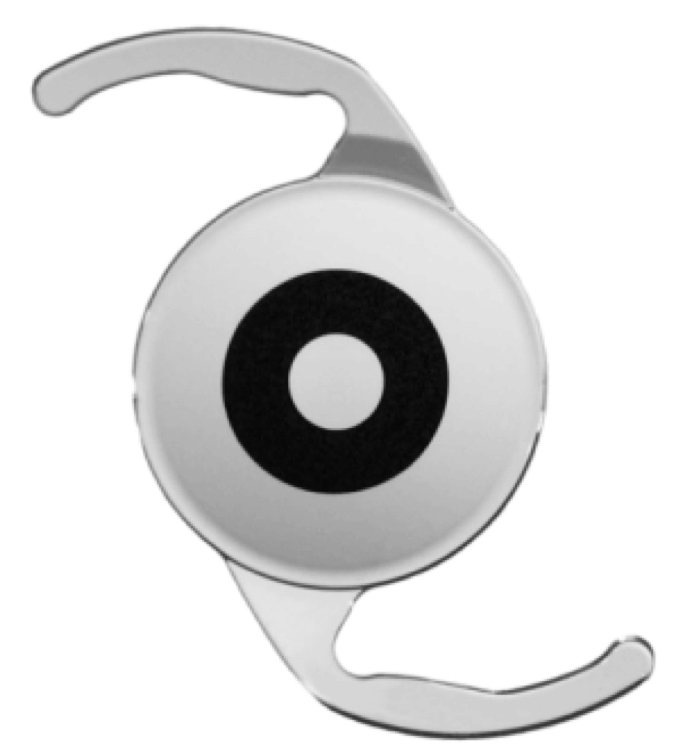More and more patients want to be spectacle independent but are less willing to accept a compromise in distance vision. We decided to introduce the IC-8 IOL (AcuFocus; Figure) in our practice after seeing postop patients who were happy with their multifocal and trifocal IOLs but still reported a compromise in quality of vision, contrast, dysphotopsia phenomena, and night vision symptoms.
Earlier this year, we began implanting the IC-8 IOL based on our 10-year experience using the Kamra corneal inlay (AcuFocus). The IC-8 is a single-piece IOL made from hydrophilic acrylic and is available in a
15.50 D to 27.50 D range. It combines a monofocal lens with a mask (central pinhole: 1.36 mm) to extend the depth of focus. The IOL is implanted in one eye only (target refraction: -0.75 D), and a monofocal IOL is used in the other eye.
The benefits we have seen so far in our patients include:
- Correction of corneal aberrations and increased depth of focus;
- Superior intermediate vision without compromising distance vision;
- Spectacle independence for reading in good and medium light conditions;
- Significantly fewer night vision symptoms compared with other premium IOLs;
- Toleration of up to 1.50 D of astigmatism;
- Understanding when targeted refractive endpoint is missed;
- A clear range of vision across all distances; and
- Normal stereopsis.

Figure | The IC-8 IOL.
Patient Selection and Clinical Pearls
Patient selection is considered to be the most important aspect of implanting presbyopia-correcting IOLs. A compromise in quality of vision, especially under dim light conditions, remains a significant challenge.
With our IC-8 patients, we have seen a reduction in glare and halos at night compared with other multifocal lenses. A good potential visual acuity in both eyes and stereopsis without other pending ocular pathologies is needed to achieve good results. Further, it is not as critical to achieve emmetropia, which makes it a great alternative for all eyes with corneal irregularities, aberrations, after LVC or with small amounts of astigmatism (up to 1.50 D).
So far, we are very satisfied with the accuracy of our postoperative refractions, and the overall patient satisfaction has been great, with 97% of patients reporting that they would choose the IOL again. For our patients, spectacle independence for near, intermediate, and distance vision is high, and readers are usually only needed for fine print or reading in dim light conditions.
Conclusion
The introduction of this new small-aperture IOL in our practice has improved results and increased patient satisfaction, especially with respect to intermediate vision and the reduction of night vision symptoms. We are now able to offer another great solution to our patients. Investing the appropriate chair time to select the right candidates remains a crucial part.

